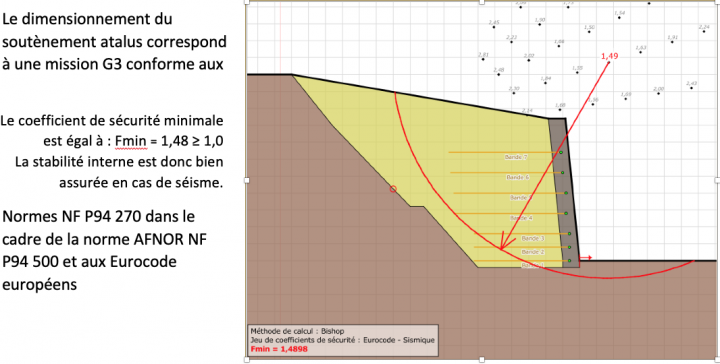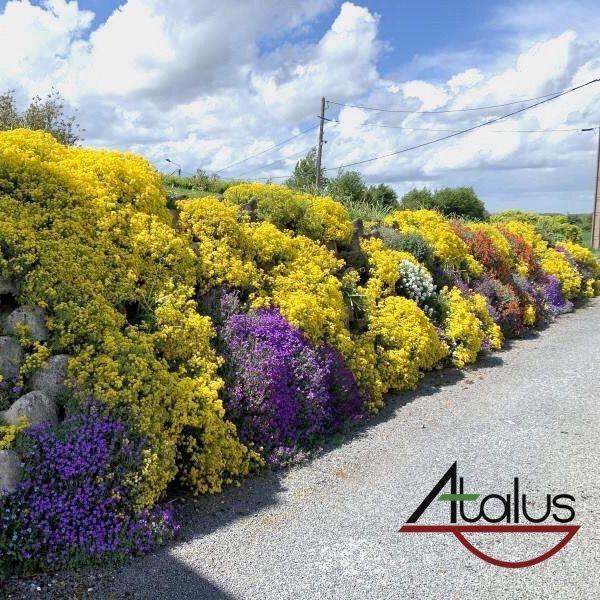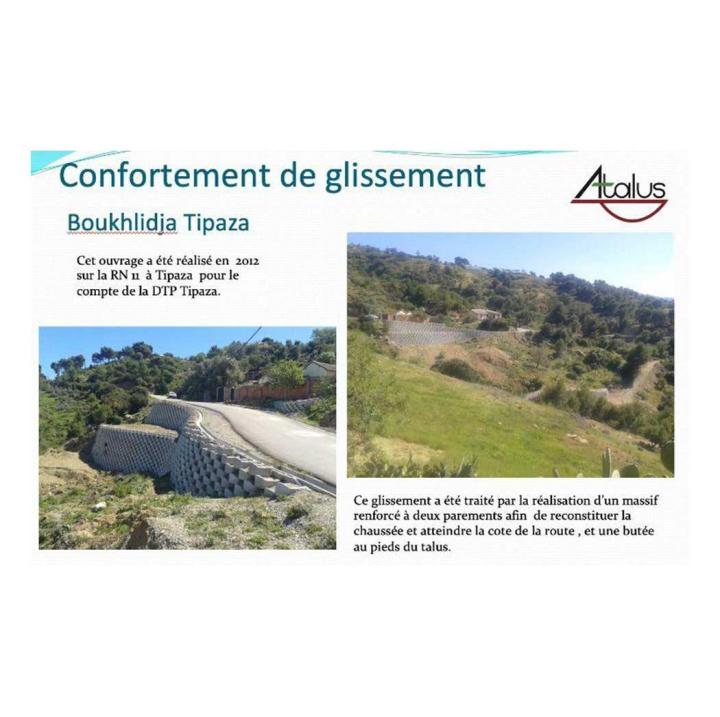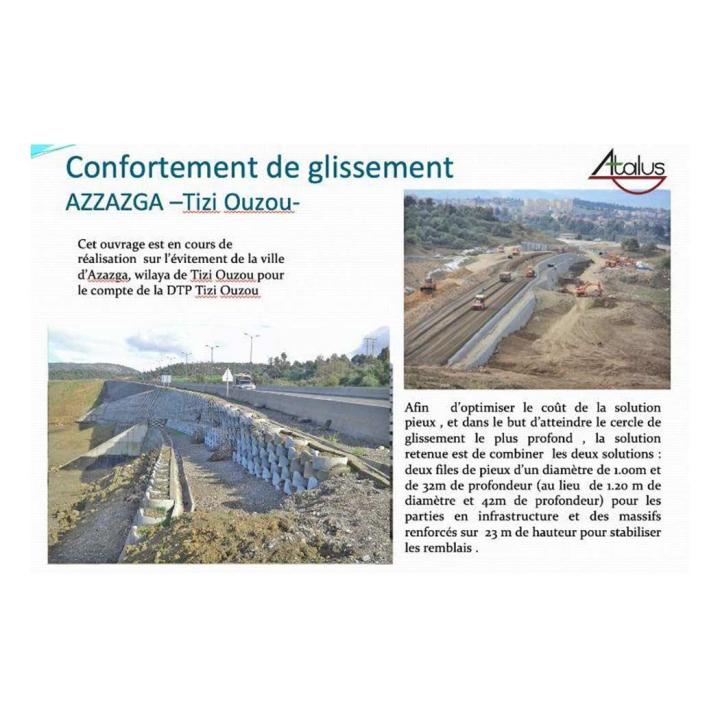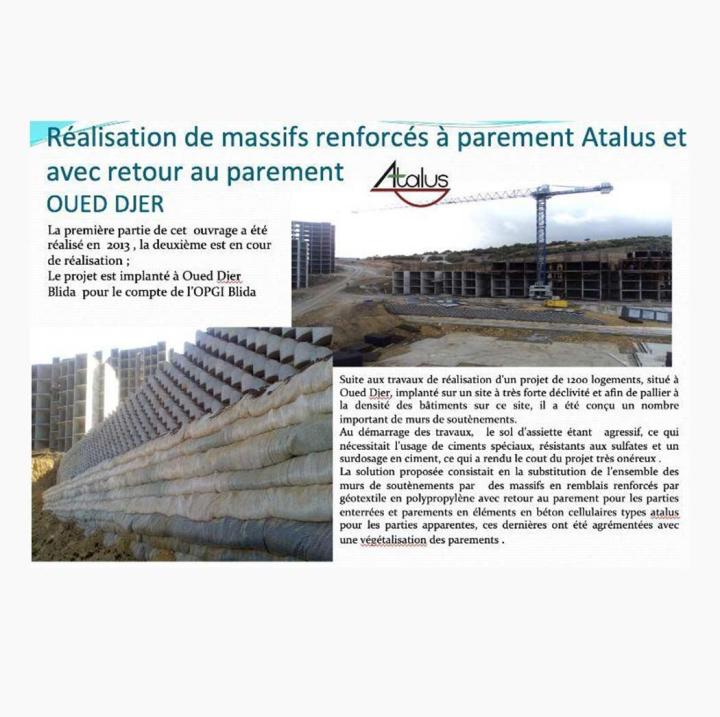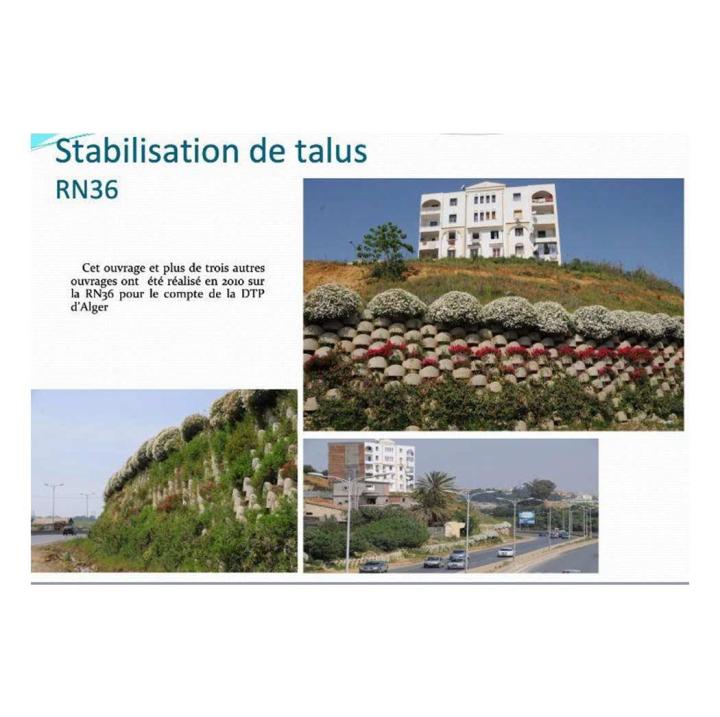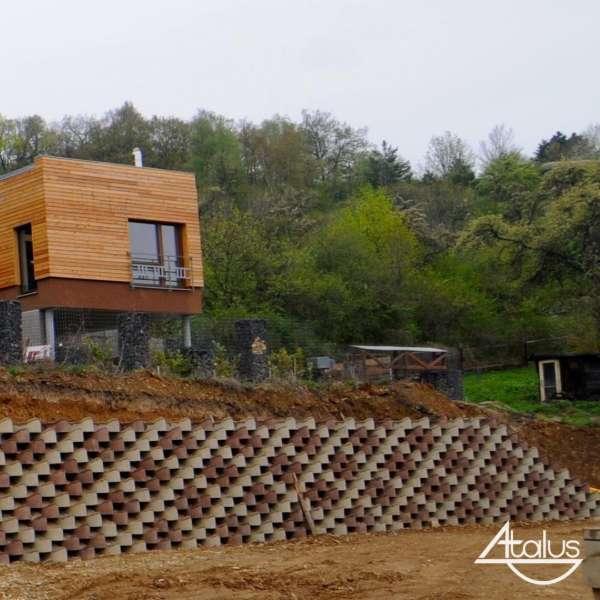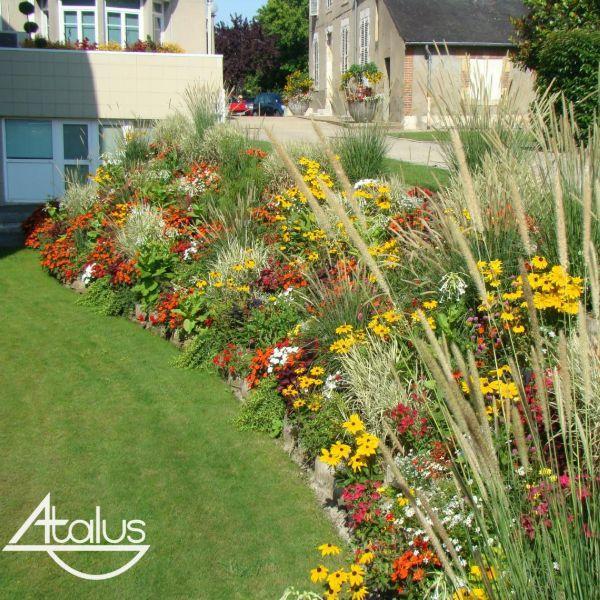Technical documentation - Worldwide
What is a reinforced wall ?
The Atalus® process allows the construction of high walls with geosynthetic reinforcement (atanappe type). The atanappes are laid in the backfill horizontally in the direction of maximum resistance.
This wall includes 3 things:
- The atalus to hold the topsoil and vegetate the wall the reinforcement atanappes, laid horizontally in the backfill, these are the real reinforcements of the wall thanks to their resistance (from 10 to 20 tons).
- The number of atanappes, their resistance, nature (polyester or polypropylene) and length are specified in the calculation note.
- The technical backfill must be compacted by layer between the reinforcements.
The quantitative project (Free) to estimate the solution atalus
The method of dimensioning an Atalus® wall with a mass reinforced by geosynthetics has been used for over 30 years. The purpose of this soil reinforcement technique is to improve the mechanical properties of these soils, in order to stiffen slopes (gain in right-of-way) or to build retaining walls.
The atanappe geosynthetics used in reinforcement have the particularity of being flexible (low bending stiffness) and deformable (low tensile stiffness). It is this flexibility that makes the Atalus® wall resistant to earthquakes. Moreover, by overlapping the strips (10% of the length of the strip), we obtain a continuous reinforcement over the width of the wall.
ATALUS provides the quantitative project free of charge. Its purpose is to help you estimate the ATALUS solution. It can in no way be used for the construction of the wall, and it does not commit the company or its author. Only the calculation note is a reference for the final construction of the wall.
A reinforced atalus wall consists of atanappe reinforcement geotextiles (laid horizontally), atalus elements, selected fill and topsoil.
It is intended for the construction of retaining walls of great heights, for the reinforcement of landslides, for the treatment of slopes and for the surroundings of engineering structures (access ramps, return walls...).
In its operation, the forces due to the weight of the embankment, to the overloads and to the ground to be supported are transmitted by friction to the reinforcement atanappes. The slide plane (in red in the example), puts in tension the atanappes which transfer the forces from the active zone downstream to the resistant zone at the back of the massif.
The calculation note (mandatory to carry out the works)
A calculation note is mandatory for any retaining wall. We decline all responsibility in case of damage in the absence of a calculation note, or if this one has not been respected or if the calculation hypotheses have not been verified.
To dimension these structures, the Design Office uses calculation software such as TALLEREN or RESSA which take into account the characteristics of the soil in place, the technical backfill, the tensile strength of the atanappes, the weighting coefficients for the atanappes (mechanical damage, creep, chemical degradation, heat, etc.), the overloads, the geometric characteristics of the wall and the seismicity of the site. The calculation must justify the stability at the ultimate limit states E.L.U. and at the service limits E.L.S. For this purpose, it determines the forces to be applied to each reinforcement layer, it justifies the distribution of the atanaps (number, length and required resistance) to avoid excessive elongation or adhesion failure.
The E.L.U. justification includes External (reversal of soil/massif sliding, punching), General (the large sliding circle outside the massif), mixed (circle which cuts a part of the massif) and internal (circle which cuts the whole massif) stability. The justification to the E.L.S. consists in checking the displacements and the deformations which could be prejudicial to the structure.
